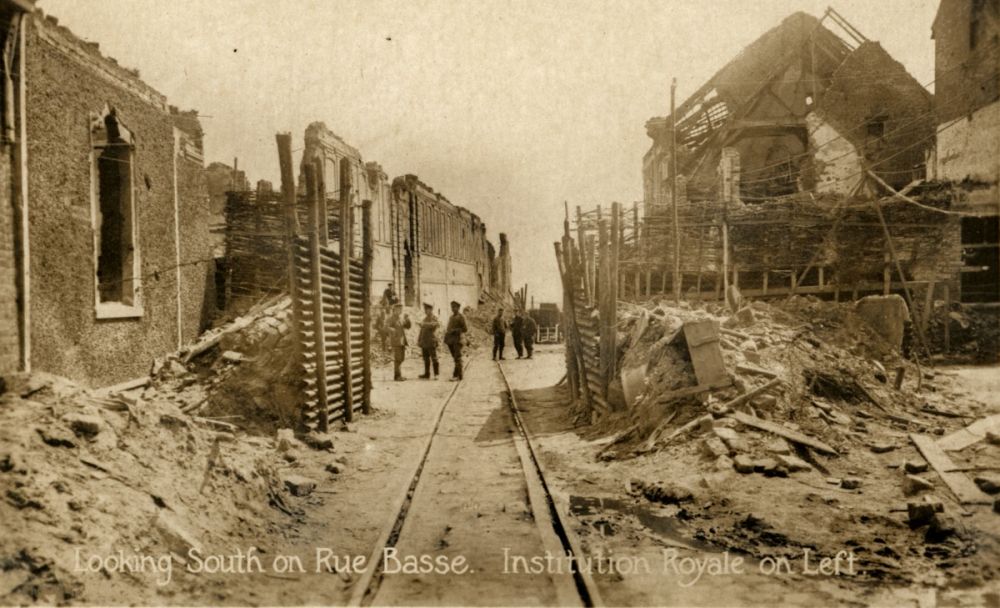St Nicolas Church
You are standing outside Saint Nicolas Church. In front of you is the plaque of Samuel Frickleton VC. If you look at the ground around you, you’ll notice in the brick work what appears to be the outline of a much larger building. This was the site of the Institute Royale - an enormous complex that had been established under Royal Patronage and was the centrepiece of the town, bringing fame to Messines before the First World War.
By 1914 this large complex had become a girls’ orphanage, but by 7 June 1917, this church and the orphanage alongside it was simply a heap of rubble - but it was still important because it was the central strong-point defending the town. Defending this position was a combination of the 3rd Bavarian Division and the 40th Saxon Division. They were just handing over when the attack took place and so merged together for its defence. Captain Thomas was the German Officer defending the town and his headquarters was somewhere in this area based in the cellars. The crypt of the church sheltered soldiers during shelling and it was also a medical aid-post.
Interestingly, Corporal Adolf Hitler was wounded in the initial fighting around Messines in 1914 and he was treated in this very church crypt. He also used it as a shelter with the other soldiers during Allied artillery barrages. The young corporal also painted several scenes of the ruined church, and a copy of one can be viewed in the Messines museum.
Back to the story of the battle, and it’s in this area of Messines that we hear about the heroics of Sam Frickleton. Frickleton was an interesting character, one of 11 children, born in Scotland, and on his father’s death they migrated to Blackball on the West Coast where they became miners. He was one of five brothers that joined the New Zealand Expeditionary Force. In this attack he was leading his section up through the artillery barrage. He was slightly wounded and their advance was held up in the rubble of the buildings around here.
He made it forward and knocked out a machine gun post, killed the three crew and then came under fire from the next machine gun post - so he went forward again, fighting his way forward, killed the three gunners firing the machine gun, and then took on and killed the nine Germans in the dugout alongside - before being severely wounded. His action allowed the attack to keep its momentum and it was part of a series of small-scale actions as they fought through and cleared each of the cellars.
The New Zealanders have successfully cleared the Germans from the ridge and the town of Messines. The enemy is demoralised and retreating, but the battle is not quite over yet.
Let’s move along to the New Zealand Memorial to the Missing at the Messines Ridge British Cemetery.









